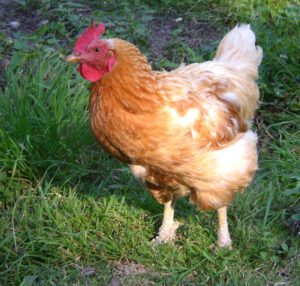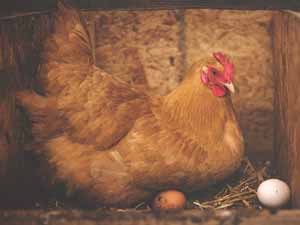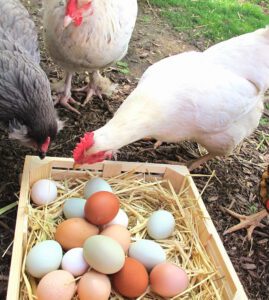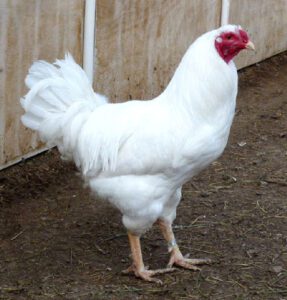Silkie chicken is one of the most popular and beloved ornamental chicken breeds. And it is currently one of the most entertaining birds to watch. The breed is also known as Silky.
It was named as Silkie chicken because of it’s a typically fluffy plumage, which is said to feel like silk. It has hair-like plumage, which is considered as actual mammalian fur. It is a very old Asiatic chicken breed.
Although the Silkie chickens have been around for several hundred years, but it’s origin is uncertain. The breed is thought be originated in China, India or Japan. The exact location from where they were developed or found is not known.
They arrived in Europe around 200 years ago, and reached the United Kingdom around the mid 1880s. Silkie chicken was first admitted into the American Poultry Association’s Standard of Perfection in 1874.
Silkie Chicken Full Breed Information
Today the breed is the most popular and ubiquitous ornamental chicken breed. And they are kept for both ornamental and exhibition purpose.

There is a bantam version of this breed. Review characteristics, behavior, temperament and full breed profile of Silkie chicken below.
Physical Characteristics
Silkie chicken is a very unique looking and beautiful bird. They are a lightweight chicken breed with broad, stout looking body which is covered in fine fluffy feathers.
Their plumage looks like fur or down instead of feathers. Because, their plumage lacks barbicels. Barbicels are the hooked projections normally extending from and interlocking the secondary branches of chicken’s feathers. Because of their such plumage, they are unable to fly.
As the breed is small in size, so they are mistakenly called a bantam breed in some countries. But it is a standard breed of large fowl class. And the bantam Silkie chicken is actually a separate variety. The Silkie chicken appears in two distinct varieties. Which are Bearded and Not-Bearded. Bearded variety has an extra muff of feathers under the beak area which covers the earlobes.
Silkie chickens are also separated according to color. White, Black, Partridge, Buff, Grey and Blue are the colors of Silkie chicken recognized for competitive showing. Other colors also exist, which include; Red, Splash, Cuckoo and Lavender.
According to the American Poultry Association’s Standard of Perfection, all the Silkie chickens have small walnut comb which is a deep mulberry approaching black. They have turquoise blue earlobes and dark wattles. They have black skin and bones and 5 toes instead of the normal 4.

Other chicken breeds which exhibit this rare 5 toe trait include; Faverolles, Dorking and Sultan. Their legs color is dark-blue with abundant feathering. Their flesh color is grayish-black.
Standard Silkie roosters weight about 1.8 kg and hens about 1.36 kg. And the bantam chicken’s weight vary depending on different standards. American Standard of Perfection calls for roosters that are 1 kg, and hens that are 0.907 kg.
The British Poultry Standard and Australian Poultry Standard call for much smaller bantam Silkies. According to the British Standard, the roosters weight 0.6 kg and hens 0.5 kg. And Australian Poultry Standard weight for bantam Silkies is 0.68 kg for roosters and 0.57 kg for hens. Photo from Wikipedia.
Behavior/Temperament
Silkie chicken is very calm, trusting and friendly. They are unable to fly and can be kept easily with low fencing. They usually do little or no damage to the garden if given them to access freely.
Silkie hens are not good layers. They lay a few cream or tinted colored eggs. But they are great mothers, and go broody frequently. They are even supremely happy to hatch the eggs of other birds. So they are frequently used as foster mothers for other birds.

Some poultry fanciers consider Silkie hens as the ideal organic incubator. Silkie hens cheerfully brood and raise their unorthodox offspring too, if given the chance. The hens stop laying eggs during the summer months.
The Silkie chicken should be kept in dry conditions, because their feathers are not waterproof. The breed is extremely suitable as pets, especially suitable for children. They are very cold hardy and also do well in confinement.
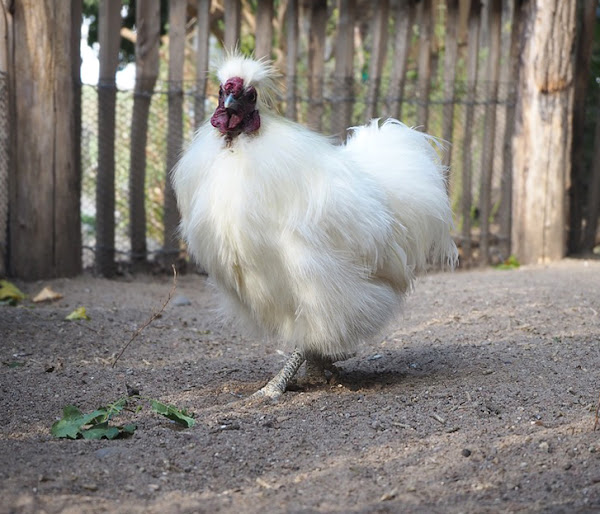
The breed was valued as a medicinal food item because of its black skin and bones. The average lifespan of Silkie chicken is around 9 years. Review full breed profile of Silkie chicken below.
| Breed Name | Silkie |
| Other Name | Silky |
| Breed Purpose | Ornamental |
| Breed Temperament | Bears Confinement Well, Calm, Easy to Handle, Friendly, Quiet, Docile |
| Breed Size | Large |
| Broodiness | Frequent |
| Comb | Walnut |
| Climate Tolerance | All Climates |
| Egg Color | Cream or Tinted |
| Egg Size | Medium |
| Egg Productivity | Medium |
| Feathered Legs | Yes |
| Rarity | Available |
| Varieties | Black, White, Grey, Blue, Splash, Buff, Partridge are the standard colors with many off standard & derivative colors in existence today. |
| Country of Origin | Thought be originated in China, India or Japan. |
